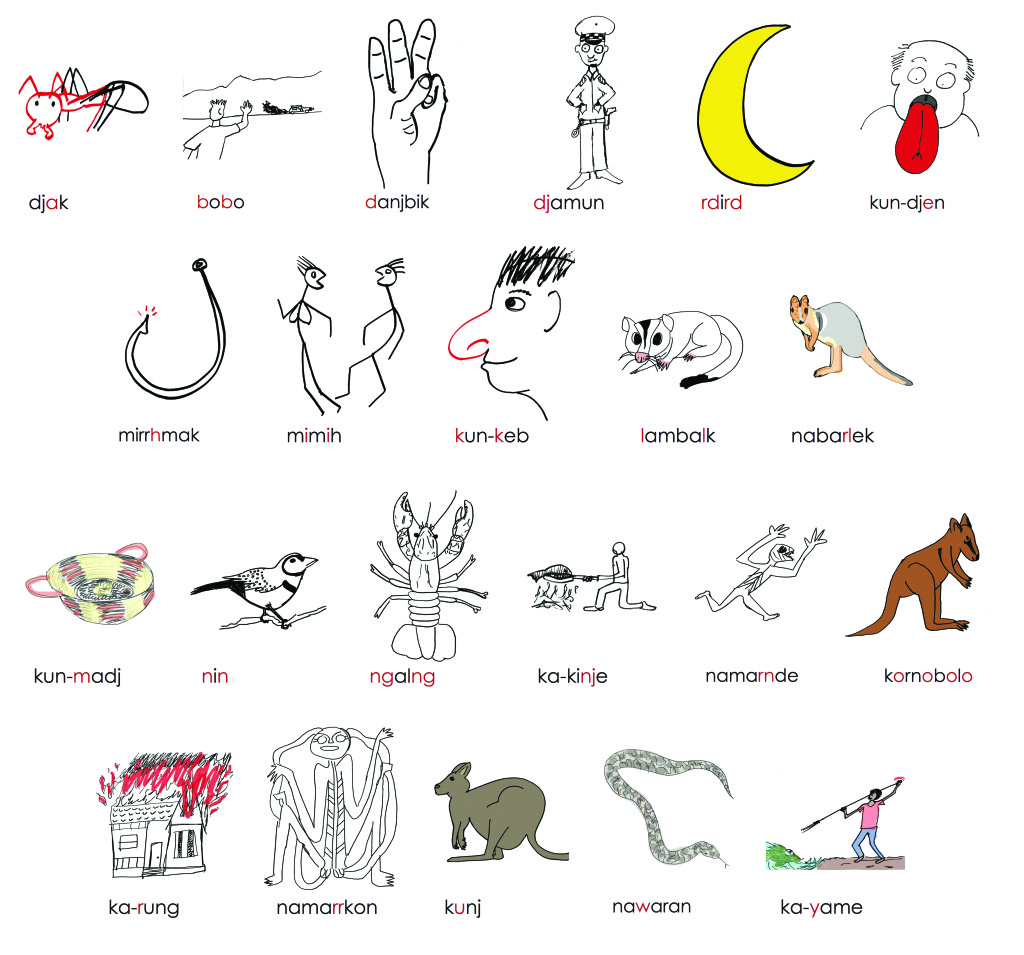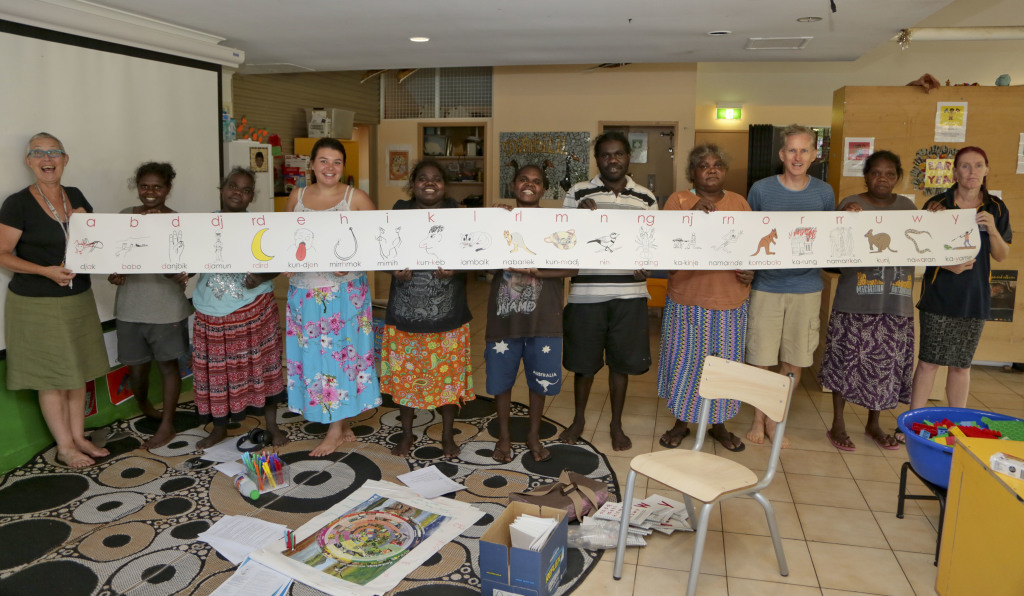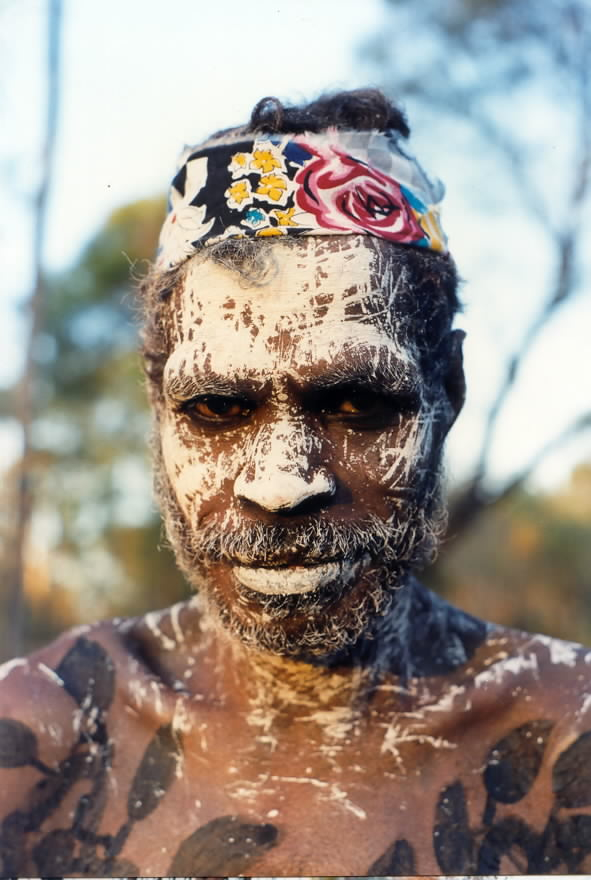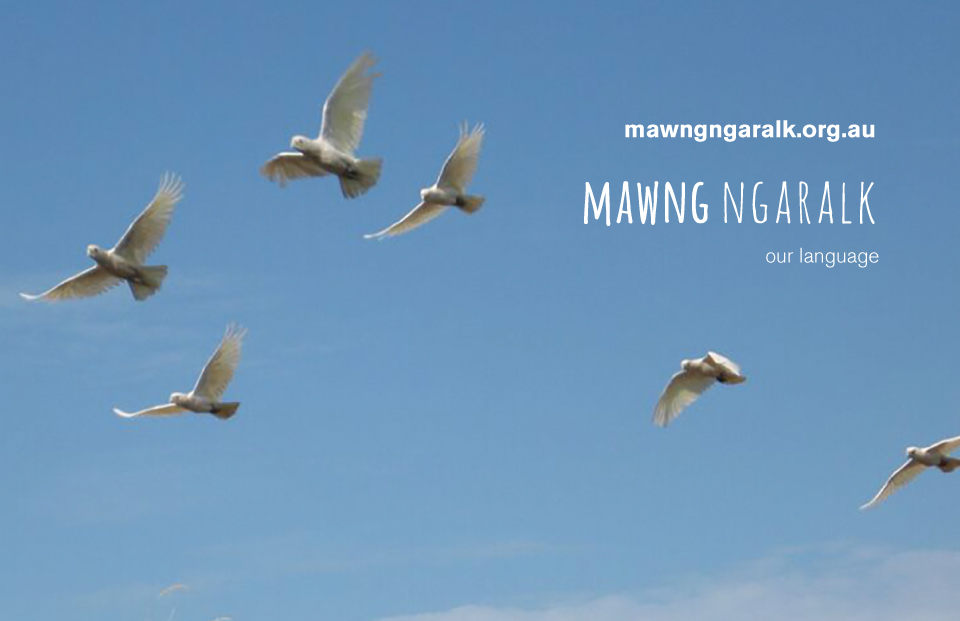We are happy to launch new literacy resources. The first is our alphabet chart and phonics books. These feature illustrations by 15 year old Corben Nabanardi from Jabiru.
Or if you prefer it in compact layout:
The alphabet strip is available for classrooms and community language teaching groups in the Kakadu and Western Arnhem Land region. Each letter of the Bininj Kunwok alphabet is used in a word. Here's the alphabet:
a b d dj rd e h i k l rl m n ng nj rn o r rr u w y
Bininj Kunwok alphabet chart. (L > R) Julie Beer, Martina Balmana, Kaylene Djandjomerr, Shannon McLeod, Kestianna Djandjomerr, Christianna Djandjomerr, Marcus Dempsey, Annie Cameron, Murray Garde, Sonya Nango and Dion Hietmann kabirri-karrme Bininj Kunwok alphabet chart. (bim: Dominic O'Brien)
Bonj
That is all.





